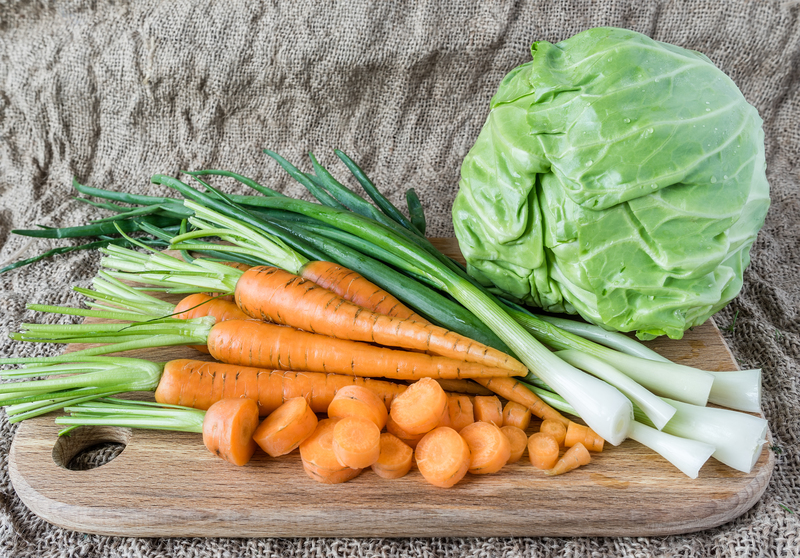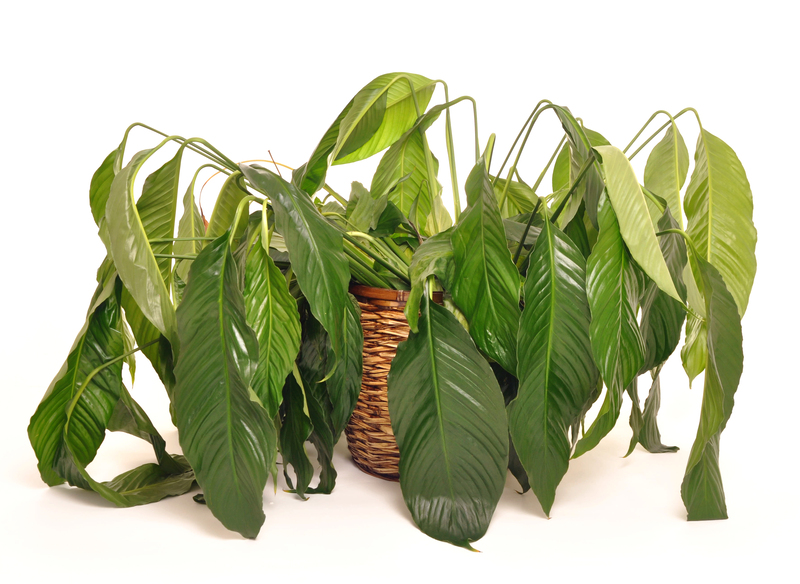Creative ways to design a beautiful herb garden
Posted on 05/06/2025
Creative Ways to Design a Beautiful Herb Garden
Are you dreaming of a lush green haven where aromatic herbs are within easy reach? Creating a beautiful herb garden isn't just about growing medicinal and culinary plants--it's also an opportunity for self-expression and creativity. Whether you're working with a sprawling backyard or a tiny balcony, there are creative ways to design a beautiful herb garden that will transform your space and delight your senses. This comprehensive guide will cover inspiring ideas, essential tips, and the best approaches to cultivate a stunning and productive herb sanctuary.
Why Design an Eye-Catching Herb Garden?
A thoughtfully designed herb garden not only enhances your outdoor aesthetics but also offers functional and environmental benefits. The soothing fragrance, lush textures, and varied colors of herbs can turn any area into a soothing retreat. Moreover, harvesting fresh herbs amplifies your culinary creations and supports wellness through natural remedies.

Planning the Perfect Herb Garden Layout
Before you get started, it's essential to map out your vision. Begin by considering the following:
- Available space: Do you have a sprawling lawn, a courtyard, or just a few pots on a balcony?
- Sunlight: Most herbs require at least 4-6 hours of direct sunlight.
- Accessibility: Place herbs you use often near the kitchen for easy harvesting.
- Soil quality: Ensure good drainage and nutrient-rich soil for robust growth.
Elements of Creative Herb Garden Design
Let's explore inspiring, actionable design ideas. By combining traditional gardening wisdom with modern aesthetics, your herb garden can become a focal point in your landscape.
Creative Herb Garden Ideas for Every Space
1. The Classic Herb Spiral
A herb spiral is a visually striking and space-efficient solution, inspired by permaculture principles. By mounding soil into a spiral and planting herbs with similar sunlight and water needs together, you create a microclimate perfect for a variety of plants.
- Place Mediterranean herbs (such as rosemary and thyme) at the top where it's driest.
- Reserve lower, shadier sections for moisture-loving herbs like mint and chives.
- Bonus: The elevated shape adds dimension and drama to your garden.
2. Vertical Herb Gardens for Small Spaces
Limited on ground area? Vertical herb gardens are both stylish and practical, letting you maximize wall spaces or fences. Try these creative approaches:
- Wooden pallets: Fill each slat with nutrient-rich soil and plant different herbs.
- Hanging planters: Suspend pots or repurposed containers at varying heights for a lush wall effect.
- Wall-mounted pockets: Use fabric or felt pockets for a living art installation.
This method keeps herbs at eye level, allowing for easy maintenance and harvest, and adds a delightful green backdrop to your space.
3. Container and Window Box Herb Gardens
If you don't have a garden plot, oversized containers and window boxes are ideal for growing a personal herb collection. Customize your containers:
- Combine several herbs in a large pot for a lush mini-garden.
- Allocate individual pots for herbs with different moisture needs.
- Decorate pots with paint or mosaic for extra pizzazz.
This approach is perfect for balconies, patios, or even sunny windowsills.
4. Geometric and Formal Herb Gardens
Embrace symmetry and order by designing your herb garden in geometric patterns, such as:
- Knot gardens: Intertwine herbs in defined, looping beds reminiscent of classic English gardens.
- Checkerboard designs: Alternate squares of herbs and gravel for a formal look.
- Segmented circles or rectangles: Create pathways or mosaics that guide visitors through scented beds.
With strong shapes, these layouts can frame your outdoor space and create a sense of organized beauty.
5. Themed Herb Gardens for Every Interest
Express your personality by tailoring your herb garden to a theme:
- Culinary healing: Focus on kitchen must-haves like basil, thyme, oregano, and parsley.
- Medicinal oasis: Grow chamomile, lavender, echinacea, and mint for home remedies.
- Fragrant haven: Plant lemon balm, rosemary, and scented geraniums for aromatic delight.
- Tea garden: Choose peppermint, lemon verbena, and calendula for home-brewed infusions.
A themed arrangement brings both order and purpose, allowing you to curate a garden that fits your lifestyle.
6. Raised Beds and Tiered Planters
Build raised beds to create tidy, accessible garden islands. Tiered planters allow you to grow more in less space, and add levels for visual interest. Raised designs also:
- Improve drainage and soil quality
- Make tending and harvesting easier for all ages
- Allow for creative shapes--try horseshoes, L-shapes, or staggered rectangles
Combine with decorative edging for extra style points!
7. Incorporating Herbs into Landscape Design
For a lush, tapestry-like effect, blend your herbs with other ornamental and edible plants.
- Line a garden path with low-growing herbs like thyme or chamomile.
- Interplant basil among roses to naturally deter pests.
- Edge vegetable beds with parsley or cilantro for added texture.
This method elevates both your culinary options and your landscape design.
8. Repurposed and Upcycled Herb Gardens
Sustainability is beautiful! Turn unused or recycled items into one-of-a-kind planters.
- Old teapots and mugs for whimsy on your patio.
- Wooden crates or wine boxes as rustic window boxes.
- Rain gutters mounted on fences or railings for sleek, modern herb troughs.
Upcycling not only saves resources but also gives your herb garden a personal, quirky flair.
9. Sensory and Accessible Herb Gardens
Design an herb garden that delights every sense--and every gardener.
- Include tactile plants like lamb's ear alongside fragrant herbs.
- Use bold foliage colors (purple basil, golden oregano) for visual interest.
- Choose raised beds or vertical planters for accessibility.
- Add a simple water feature or windchimes for sound.
*Tip: Place calming herbs like lavender near seating areas for a relaxing ambiance.*
Essential Herbs to Plant in Any Beautiful Herb Garden
No matter how you design your garden, consider these must-have culinary and aromatic herbs for an inspiring space:
- Basil: Versatile and fast-growing, with many colorful varieties.
- Parsley: Great for borders and flavorful garnishes.
- Rosemary: Drought-tolerant and ideal for structural planting.
- Mint: Best in dedicated containers to prevent spreading.
- Thyme: Low-growing and fragrant, perfect between stepping stones.
- Sage: Soft, silvery leaves add texture and aroma.
- Chives: Edible flowers and slender greenery for a delicate display.
- Cilantro: Fast-growing and essential for salsas and salads.
- Oregano: Sprawling growth habit creates a lush green carpet.
Decorative Touches for a Stunning Herb Garden
Your herb garden design isn't just about the plants. Integrate artistic and practical accents for a truly unique look:
- Personalized plant markers: Paint rocks or use vintage silverware to label your herbs.
- Garden art: Place small sculptures, colorful mosaics, or windchimes among your plants.
- Pathways: Stepping stones or gravel lanes make for easier access and add charm.
- Seating: Add a bench, bistro set, or hammock for relaxation amidst your herbal bounty.
These extra touches encourage you (and your guests) to linger and savor the sights and scents.

Design Tips for Year-Round Beauty
- Grow herbs with different blooming times to ensure continual interest.
- Plant evergreens like rosemary for winter structure.
- Mix in flowering annuals (such as nasturtiums) to attract pollinators and add seasonal color.
- Use mulch or low groundcovers to maintain neatness and moisture.
Maintaining a Gorgeous and Productive Herb Garden
Once your herb garden design is in place, simple ongoing care ensures lasting beauty:
- Water consistently, but avoid soggy roots--most herbs like slightly dry soil.
- Prune regularly to encourage bushiness and prevent bolting.
- Feed with compost or organic fertilizer every few weeks during the growing season.
- Watch for pests--use natural remedies or companion planting to deter them.
Remember, harvesting keeps your herbs productive and looking their best.
Conclusion: Your Own Beautiful, Creative Herb Garden
With these creative ways to design a beautiful herb garden, you can transform any space into a fragrant and functional retreat. By combining inspired layouts, thematic collections, and personal artistic touches, your herb garden will thrive as both a useful and ornamental feature.
Whether you crave classic formality or whimsical upcycling, embrace your creativity and make the most of your available space. Soon, you'll be enjoying fresh flavors, captivating aromas, and a garden that reflects your unique style--year after year!
Ready to start your herb gardening journey? Share your own creative designs and tips in the comments below!



